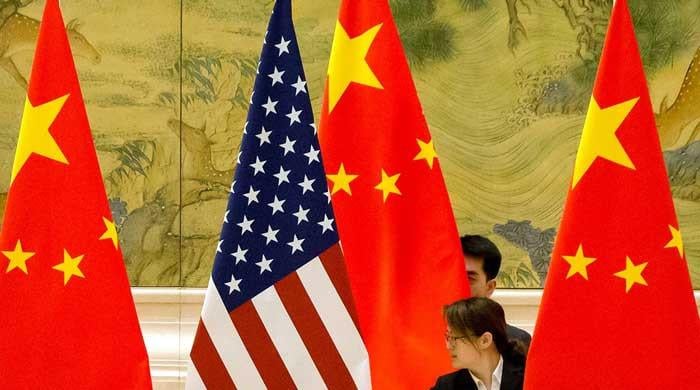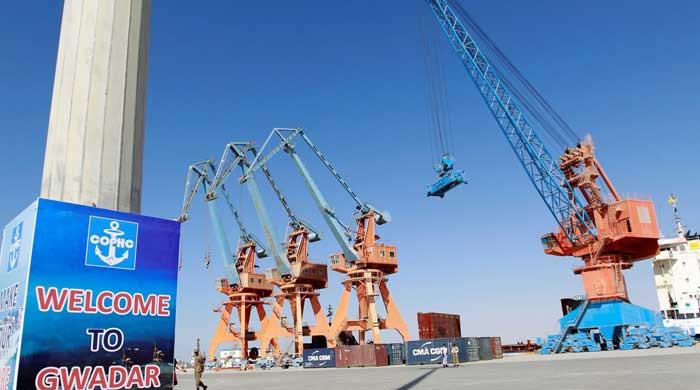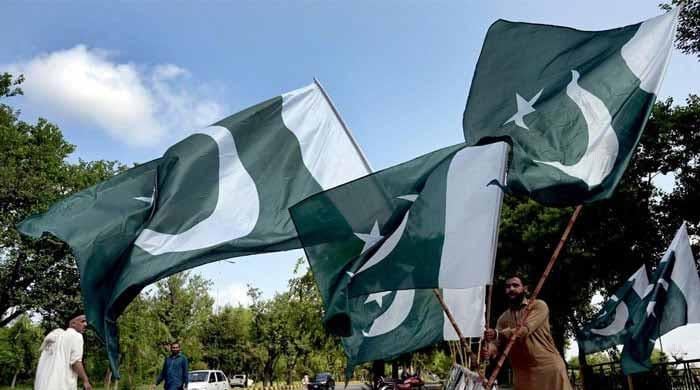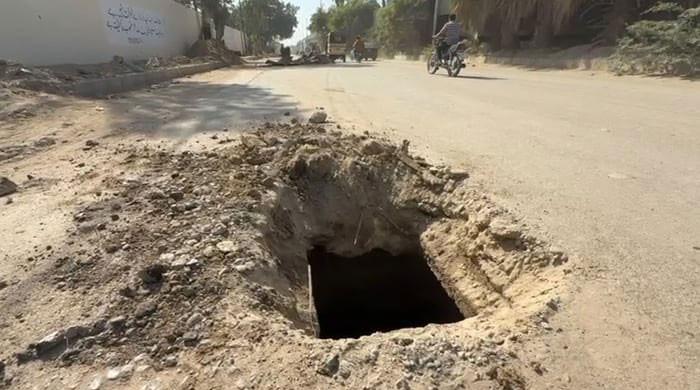The Indus runs through it
River systems are not political boundaries; they are complex, delicate ecosystems that transcend borders
August 28, 2025
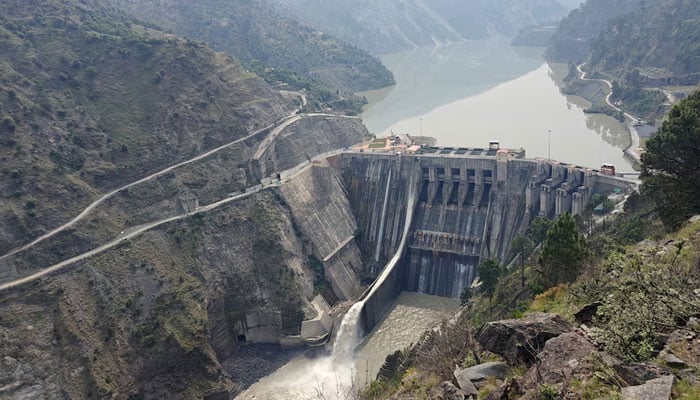
"We will ensure no drop of the Indus River's water reaches Pakistan". Hindutva's water resources minister Chandrakant Paatil threatened this crime on X, nine years after PM Narendra Modi first declared his intent to do so.
In premeditation, Hindutva put the Indus Waters Treaty (IWT) into "abeyance" in April this year. Weaponising water thus sets a horrific global precedent of rivers as cudgels, inviting other upper-riparian nations in water-stressed regions to bully the lower-riparian and plunging the world into a new, terrifying form of resource conflict.
Hindutva has threatened a hydrologic siege prohibited under the IWT and witnessed rarely in armed conflict. It has also conflated 250 million Pakistani — farmers, children, urban dwellers — with terrorist non-state actors.
The consequences of this stoppage would be catastrophic for Pakistan’s agriculture and likely unleash chaos of an unimaginable scale. Waves of climate refugees would flood not only across India's borders, destabilising the entire region, but also add to refugees fleeing to the West through borders and high seas.
River systems are not political boundaries; they are complex, delicate ecosystems that transcend borders. The Indus is an ecological entity, supporting a vast biodiversity from the Himalayas to the Arabian Sea. Severing its flow would be an act of ecological warfare that would have devastating and irreversible environmental consequences.
It would kill the already shrinking river delta in Sindh and destroy unique mangrove forests and fisheries. Aquifers would be depleted, and salinity would render vast tracts of land barren forever. The land would desertify, creating a new dust bowl and triggering climatic changes whose severity cannot be calculated yet.
Yet the true argument against stopping the Indus and letting it flow as it has for millennia is beyond war and international law. It is a crime against the civilisation that flourished ancient around the Indus. With the rivers Nile, Yellow and Tigris-Euphrates, the Indus has nurtured one of the four principal ancient civilisations of humanity. Writing in "The Cambridge History of India", Sir John Marshall observed that "before the rise of the Maurya Empire, a well-developed and flourishing civilisation had existed in India for at least a thousand years".
In the same Cambridge series, Sir Mortimer Wheeler wrote that "The Indus civilisation can claim a larger area than any other of the known pre-classical civilisations [….]This culture was itself an expression of a highly evolved urban discipline and economy, in other words of a civilisation…elements of this civilisation have been recognised widely between the Himalaya and the sea, in the Indus system and the former parallel system of the Ghaggar, but not across the divide in the Jumna-Ganges country".
"The very name of India comes from the river", Alice Albinia tells us in Empires of the Indus. "The Indus valley has a continuous history of political, religious and literary ferment stretching back thousands of years; a history which Pakistanis share with Tibetans and Indians. The intertwining of those chronicles, memories and myths — that is the inheritance of the people who live in the Indus valley".
Wendy Doniger has demonstrated conclusively in "Hinduism: An Alternative History" that the Indus civilisation was vastly more sophisticated than the culture of the Vedic people and the subsequent Hindu culture of the entire Subcontinent derives from the Indus basin, not vice versa. No wonder her Indian publisher was forced by Hindu extremists to recall and destroy the book in 2014.
"It is not likely that the same people could have built the Indus cities and also composed the Rig Veda", writes Prof Doniger. "People who composed the Rig Veda […] were moving about in what is now the Punjab, in Northwestern India and Pakistan. They lived in the area of the Seven Rivers (Sapta Sindhu), the five tributaries of the Indus plus the Indus itself and the Sarasvati. It is hard work to fit the ruins of the Indus Valley civilisation into the landscape of the Rig Veda. We can see the remains of the world that the people of the Indus Valley built, but […] the Vedic people left no cities, no temples, scant physical remains of any kind".
Threatening to stop the flow of the Indus River is a threat not only to starve Pakistan but also to kill a living entity. Robert Macfarlane argues in Is A River Alive? that rivers are living beings who should not be killed. The possibility that a river is alive "changes the world", he says. It forces us to think differently and exercises our moral imagination.
Macfarlane resists pronouns like "that" or "which" and chooses "to speak of rivers that flow and forests who grow". One of the three case-studies in Macfarlane's lyrical yet hard-hitting work is the destruction of the Kosasthalaiyar, the Cooum and the Adyar rivers in Chennai, India.
Macfarlane’s animistic sense of the flowing rivers is complemented by Mustansir Tarar's "Bahao" (Flow) and by James C Scott’s "In Praise of Floods". A river is not, in Prof Scott’s view, merely a line on a map or a channel of water moving downhill. "Every river is a complex living ecology built of innumerable tributaries, a massive drainage system of veins — some thick, some thin — that find their way across a basin, eventually to the sea. It is the entire waterscape that comprises what we conventionally call a river", Scott writes. The reality, Prof Scott argues, is something much more fluid; a profound, ongoing dialectic between living beings and the flow of water as the source of sustenance, renewal and culture. Human beings are merely one part of this waterscape.
Human beings as part of the waterscape is precisely the subject of Tarar's novel of the Indus. He dedicated the book to "Sarasvati, who is the mother of prodigious waters […] and is the seventh stream, her waters come growling with majestic and loud sound". "Saras" means flow, while "vaiti" denotes "she who has": thus Sarasvati is "she who has a flow". Sarasvati is the Hindu goddess of learning, the arts, and music, but her origin in Vedic sources, according to Prof Doniger, is the personification of a sacred river in northwestern India that dried up around 1900 BCE.
Nearly 4,000 years after Sarasvati dried up, the Indus continues to flow — and mightily so. Culture, agriculture, horticulture, art, colour and song have arisen over millennia from the Indus, four-fifths of whose basin is in Pakistan. The inheritor of this civilisation, Pakistan, has inconvenient truths of its own to learn and difficult challenges to surmount; to preserve, protect and respect our rivers and the civilisation they have engendered, and to pass this irreplaceable inheritance in good order to our children.
"Eventually, all things merge into one, and a river runs through it", writes Norman Maclean. "The river was cut by the world's great flood and runs over rocks from the basement of time. On some of the rocks are timeless raindrops. Under the rocks are the words, and some of the words are theirs […] I am haunted by waters".
The Indus civilisation is incomparably more ancient than the borders drawn in 1947. It is sustained and haunted simultaneously by the waters of the Indus as well as the ghost of Sarasvati, both of which still run through it.
Hindutva’s threat to stop the flow of the Indus transcends political brinkmanship and enters the realm of a crime against civilisation. It will be a crime against life itself. The imperative is not to stop murderously, but share responsibly; not to divert selfishly but to take stewardship jointly for our future generations.
Disclaimer: The viewpoints expressed in this piece are the writer's own and don't necessarily reflect Geo.tv's editorial policy.
The writer has served as Pakistan’s minister for foreign affairs, defence, commerce, and energy. He tweets/posts @kdastgirkhan These are his personal views.
Originally published in The News




